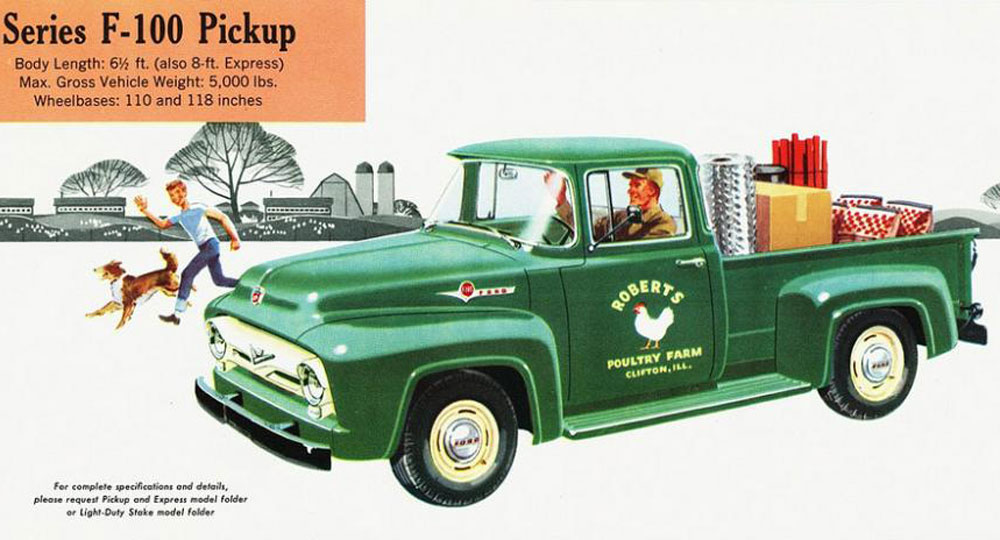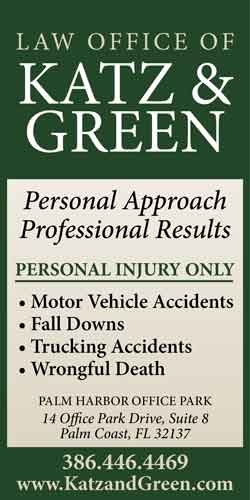
The Palm Coast City Council on Tuesday voted 3-2 to table a proposed ordinance loosening restrictions on commercial vehicles in residential driveways until Nov. 18.
A first reading of the ordinance cleared the council by the same vote on Oct. 21. It allows for pickup trucks and vehicles like the typical work van to park for more than work calls or for lunch in residential driveways even if the vehicles have commercial markings and advertising. The hang-up this time is the length and height of vehicles. The proposed ordinance would allow vehicles of up to 18 feet in length and 10 feet in height to park in driveways.
The city is on the verge of relaxing a ban in place for the entirety of the city’s history. It’s come close to removing the ban before, only to stop short of that.
Mayor Mike Norris raised the objection to the length. “That technically eliminates pretty much a standard F-150 from being parked in a driveway,” he said of the common Ford pickup truck. He said his wife’s Expedition Max is 19 feet, and that a Ford Transit, a boxed van, is a little over 19 feet. He asked for the ordinance to allow for 20 feet rather than 18, and his colleagues–those who approve of changing the ordinance–agreed.
Ford has eight F-150 models on the market today. According to published specs, they all range in length from 17.4 feet to 19 feet. (for the F-150 XL, XTS, XLT, Lariat, Tremor, King Ranch, Platinum and Raptor.) The Max is 18.5 feet. The Transit ranges from 18 to 22 feet, the longer one for the passenger variety.
Norris also had a problem with the height: 10 feet, he said, is the height of a basketball goal, and wanted it lowered.
“We’re getting to a point, I think, where something that we may have been trying to avoid. So I just want to make sure this isn’t getting away from us,” Council member Theresa Pontieri said.
“Is there any specific vehicles that would be 10 feet that we’re trying to exclude? That’s the question,” Council member Ty Miller said. Even the largest Ford Transit van is barely more than 9 feet. It’s not clear if the limit will be lowered to 8 or 9 feet. (“How is the city going to enforce the height of those pickup trucks,” Chantal Preuninger, a resident who tends to address a majority of items before the council, asked. “They’re going to come with a measuring stick or something? Yeah, that’s going to be interesting.”)
Norris, Pontieri and Miller voted to table the ordinance. Council members Charles Gambaro and Dave Sullivan, who want to keep all current restrictions, voted against.
The item allowed for new, if limited, opposition to changing the ordinance. “ Give them an inch and they’ll take a mile, and this has already begun,” said Vincent Ligouri, a long-time vocal (and often influential) activist in city politics, but not so much in the last few years. “Residents are reporting increased noise, visual clutter and a loss of neighborhood character,” he said. He did not say where or by whom those reports are being documented. The city’s code enforcement manager, Barbara Grossman, told the council that she would provide a report on the new ordinance’s effects within six months of its enactment.
“The presence of parked commercial vehicles will lower property values and spark disputes amongst neighbors,” Ligouri continued, though that’s more speculation than demonstrated fact.
Norris during the discussion had a surprise for his colleagues. “We polled 986 voters within the city, we had 361 that responded to the survey,” he claimed. He did not say who “we” were, what sort of survey it was (by mail? By email? By other means?), how the survey sample was determined, how the survey was phrased, who paid for the survey, if anyone, who requested the survey, or on whose behalf it was done. The council had not discussed such a survey. The administration, when asked about it on Wednesday, had no idea what Norris was talking about.
The only thing Norris disclosed on Tuesday were the alleged results: 64.8 percent in favor, 34.1 percent opposed. “A large portion of the community wants that that ordinance changed,” he said. (When the city conducted its own survey in 2021, deeply flawed though its method, the result was 49-49). Gambaro, who called it “good input,” asked Norris what the margin of error was. Norris could not provide it just then.




























Tony says
If they violate the ordinance call the FCSO and let them write the ordinance violation. There’s plenty of them doing nothing day and night !!!!
Raymond says
How excatly do you know FCSO is doing nothing all day and night? Is this something you are pulling out of your rear end or mouth (same thing) or do you have data to support this statement. I doubt it.
Dennis C Rathsam says
POPPYCOCK!!!!! LET THE PEOPLE VOTE ON THIS.
Tired of it says
So already they want bigger, taller…see where this is going? The additional length will definitely allow for the Jonboy sewage truck….The irony is that most of this commercial vehicle parking will take place in neighborhoods with already lower property values,
Too smart for this scam says
Mayor Mike Norris posted on “nextdoor” that he’d “commissioned” a survey of Palm Coast residents about the issue of allowing commercial vehicles to be allowed to park in residential driveways.
The “Norris Survey” shows in pie chart form that the majority of Palm Coast residents say yes to allowing commercial vehicles to be parked in residential driveways.
Only problem is that not every Palm Coast resident received the survey. I didn’t receive the “Norris Survey” commissioned by Mike Norris.
My phone number and email address are listed for the City of Palm Coast on Connect and other avenues of communication. Yet, I did not receive the survey so I could vote NO.
How’s that work? Did Mike Norris send out his “survey” to his friends and supporters? How many were surveyed? How did Mike Norris send out his survey?
Just another scam to skew the vote for “YES”.
Rio says
Norris orchestrated the whole survey by sending out to his selected very few naive friends, family and ignorant supporters, then he claims to have the support of the majority of citizens.
Hogwash plain and simple. He must have been an admirer of the newly elected socialist mayor of New York and pay tribute to him by following his example. What happened in New York won’t be tolerated by the citizens of Palm Coast. This is Florida! Where Patriots live. Not sheep.
It’s time to Stand up and fight back.
Even if you vote yes we should never allow a socialist dictatorship to exist in our city. Vote however you want but Flush Norris down the toilet into polluted murky pee hole water that’s being pumped into our homes daily we pay through the nose for.
Palm Coast has never been in worse shape then it is now since Norris was elected mayor by the dumbest people ever!
Billie was born and grew up in Flagler says
You mean “Mike Mandami Norris”? Skewing the vote to get your desired result.
Yes, that’s Mike Mandami Norris with his fake “commissioned” survey sent to only a few of his ardent supporters to get the “yes” vote he wants regarding parking commercial vehicles in residential driveways. That way he can announce during the next Palm Coast City Council meeting that the majority in Palm Coast voted “yes”. This is laughable and actually sad that he’s so stupid that he thinks people will believe him. It seems no one received his “commissioned survey”. So of course if he says the majority of voters in Palm Coast voted yes, that must mean his wife and sons.
What a joke. Is there an artist out there who can post a cartoon about this?
Capt Bill Hanagan says
Hell yea Rio. Real patriots police what their neighbors are allowed to park in their driveways!
Don’t tread on me!!!
TrumpHole says
I voted NO for the new city hall. They built it anyway. Our local government doesn’t deserve it. They are amateurs. I’ve lived here for thirty five years. I signed a paper called “Covenants and Restrictions”, every time I closed on another house ,and it laid out the rules. As far as I know, everyone signed it. Those rules were meant to keep our neighborhoods nice. But now the local government has to satisfy all the crybabies, pissers and moaners?
I don’t give a shit if the working guy has to go to the compound to pick up his work truck, that’s the rules here. I had to drive 40 miles to work EVERYDAY! Now, I’m voting with my feet. I’m out of here! I’m tired of looking at garbage cans across the street for the past several years. Now some shitty work truck will be parked amongst the trash and busted boats and trailers. no thanks.
See ya Palm Coast.
This used to be a nice hometown. Now we elect idiots like Noris. Sorry folks, I voted for that scumbag too!!!
Warm regards,
Bye.
poli sci says
64.8% of 361 responses to the survey is a true representation of the community?
FlaglerLive says
No survey is valid if its methodology, its platform and its language are not revealed. We are only reporting the mayor’s numbers because he brought them up at a public meeting.
Aj says
I have a neighbor that brings home his FedEx large box truck and park it there all the time
May I suggest says
Instead of measurements maybe number of axles or just adopt the state law? Just a thought. 🤷♀️
Bonnie says
I purchased a house in Palm Coast because of all the rules and regulation and I don’t have to pay HOA feeds. Please Mayor Norris do not allow large commercial vehicles in our neighborhoods. People do have garages if they need to park their commercial vehicles.
Anything larger needs to be stored elsewhere and not in our neighborhoods!
Brett says
You need to move to an HOA if you want to control other people. The joke is on you though, you’re paying the fees anyways in taxes in Palm Coast. I’m betting you are also the type that is entirely dependent on the blue collar workers here but you’re offended by having to look at them and their way of life.